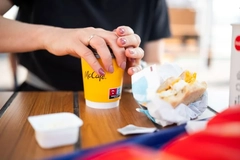Keep a Handle on it - the Message for the Milk Bottle

Using existing plastic milk bottles and prototype designs (without a handle) for a two-week home trial, the research participants overwhelmingly agreed that the existing handled bottles were easier to use compared to the handleless prototypes.
20/09/08 Pensioners now outnumber children for the first time, according to the latest Government statistics and over the next 20 years, the percentage of the pension-age population is expected to increase further, with the over 65s projected to rise by 49% and for the over 75’s, a rise of 63% is predicted . Given that a third of buyers of milk in one and two pint plastic bottles are retired, Nampak Plastics, one of the UK’s largest manufacturers of plastic milk bottles, recognises the importance this sector has on the milk industry.
Qualitative research has been carried out with a group of milk consumers with manual dexterity or visual impairments. The research was commissioned by Nampak in association with the Help the Aged business network, engage, and carried out by Ricability - a specialist consumer research and information charity that works predominantly with older and disabled consumers. The research clearly showed a strong user preference for the existing plastic milk bottle design with a handle.
Using existing plastic milk bottles and prototype designs (without a handle) for a two-week home trial, the research participants overwhelmingly agreed that the existing handled bottles were easier to use compared to the handleless prototypes. Of the ten users, nine preferred the existing bottle designs because their handle made them easier to locate, identify, lift, carry and pour from. Gripping was easier and felt more secure, regardless of the weight of the trialled bottles.
A quarter of the total milk volume purchased in the UK is by those in the retired category according to the latest 2008 data from a TNS Worldpanel survey carried out for Nampak Plastics. This represents the largest market for milk and by implication any changes to the traditional plastic milk bottle design could have a significant impact on these consumers.











